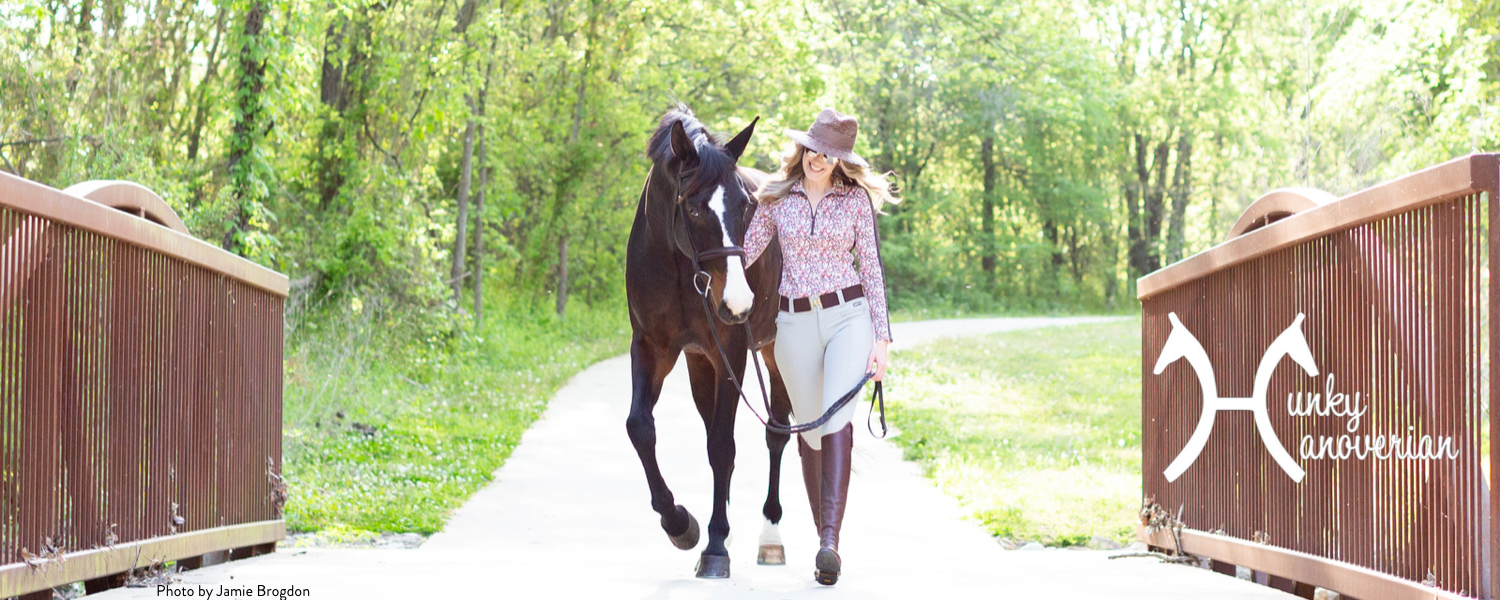Hey guys! Since I don’t have any new blog content at the moment, I thought it might be fun to revisit some old posts that you may not have seen if you’re a newer reader.
Ever wonder where Rio came from in the genetic sense?I did this post back in 2017 and I still LOVE it. It talks all about Rio’s lineage, and I got a lot of help with it since I’m no breeding expert! Anyone have a horse loosely related to my Rio??
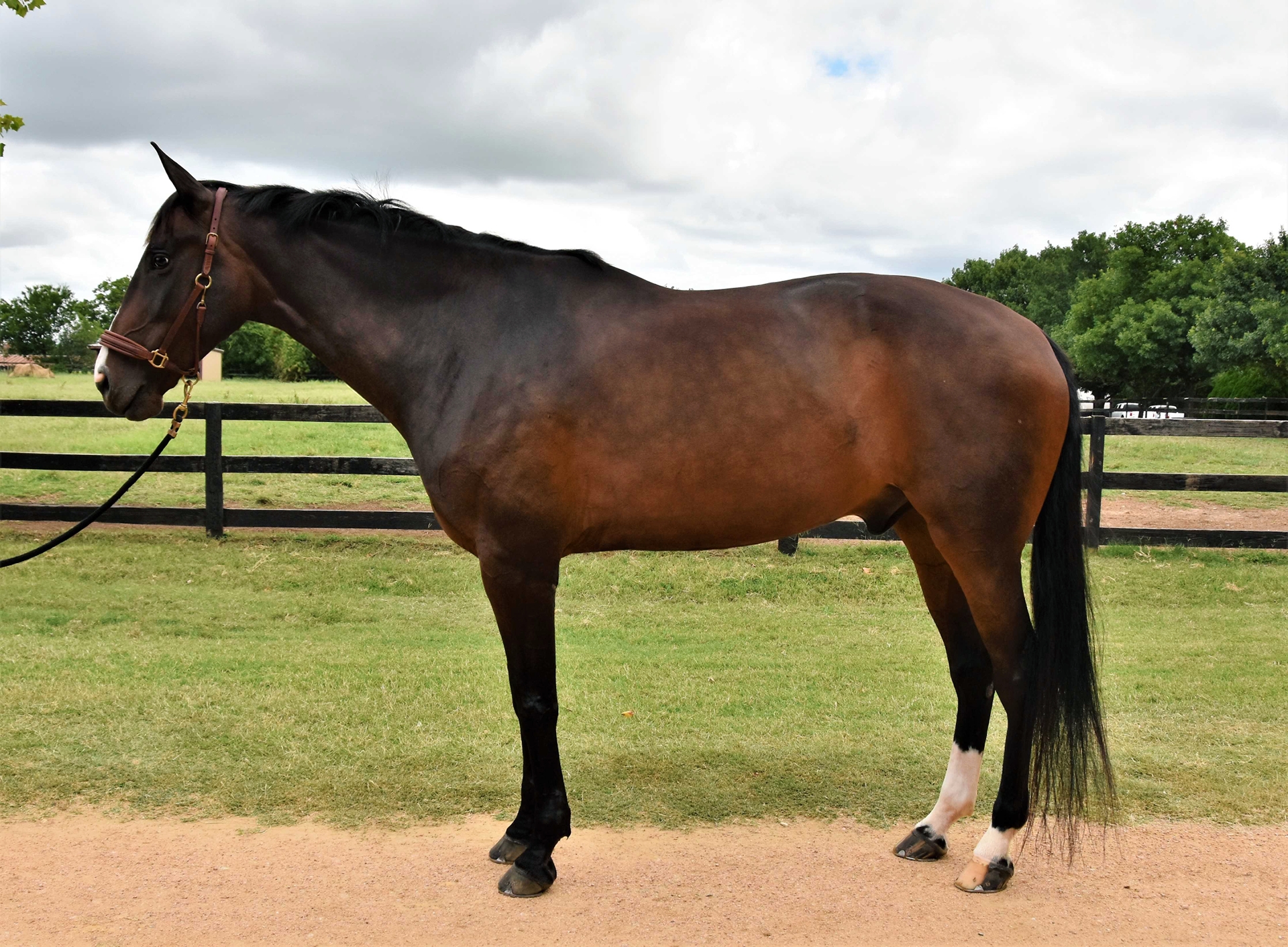
Below is the original post:
_____________________________
I get lots of questions about Rio’s breeding. Most of the time I kind of shrug, or else I reference Sandro Hit. I mean, I know next to nothing about hanoverian breeding and the various Hanoverian/warmblood lines. I have of course heard of some of the greats, and I recognized their names on his papers (Sandro Hit, Donnerhall and Rubinstein all caught my eye). But, I have never been able to carry a conversation about his breeding.
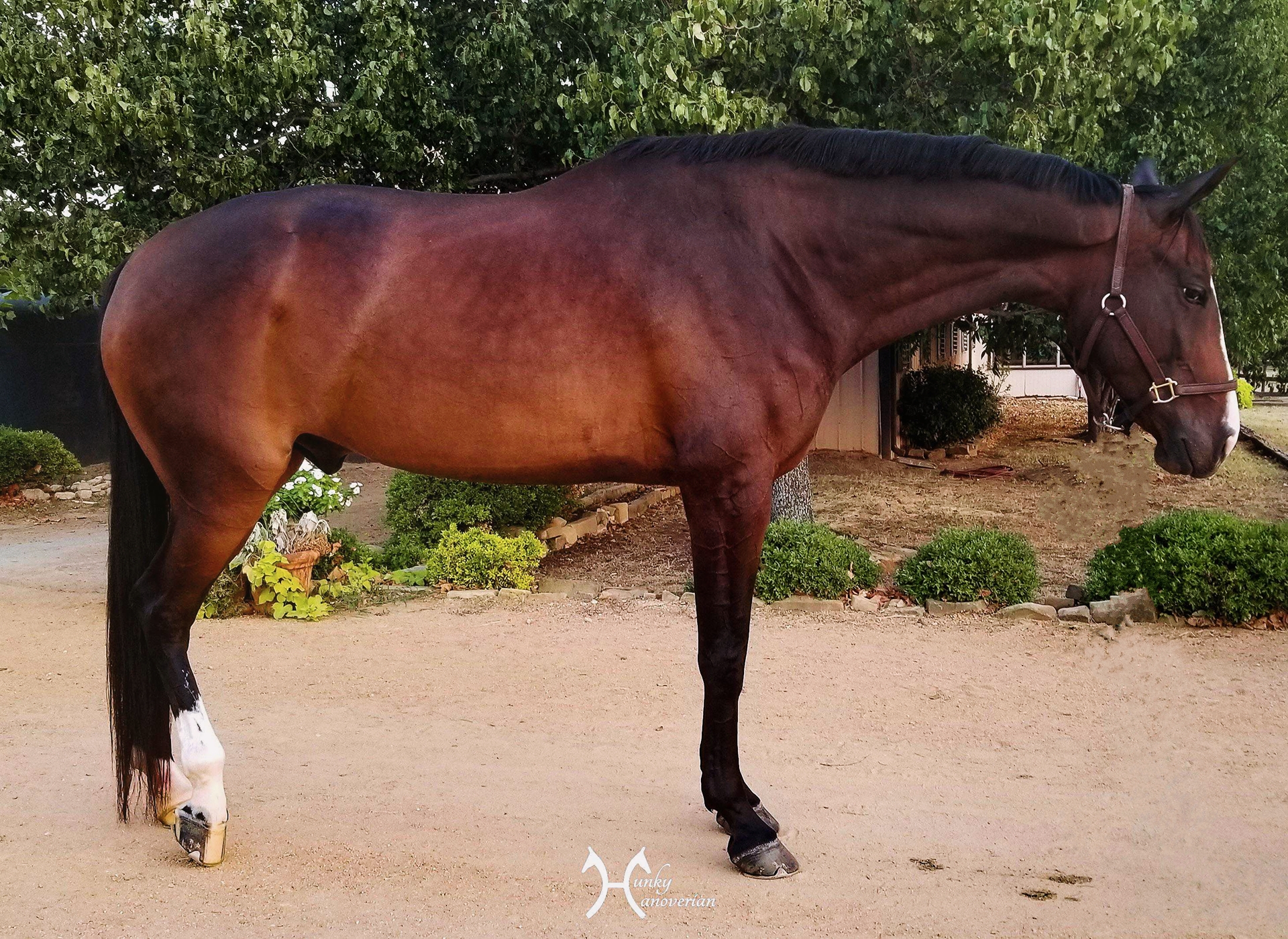
The day finally came where I got curious enough to look further. I started researching some of the stallions in a bit more depth, and got more and more interested as I read up. The more I read, the more I also realized how much I DON’T know about the nuances of breeding and I realized I needed some major help. I reached out on the Chronicle of the Horse forum, and it did not disappoint. Giant THANK YOU to “Edre” from COTH for all of her amazing help to make this post come to life, I literally couldn’t have done it without her, or at least not done it in nearly the amount of detail. Edre wrote the majority of this post, I in no way take credit for her plethora of knowledge, and am so so thankful to her for bringing Rio’s bloodlines to life for me! Thank you lady!!!
_______________________________

Rio was bred by Bona B Ranch in Eustace, Texas. A boutique, family run operation, they focus on breeding high quality Hanoverian and Dutch Warmbloods intended for the dressage ring.
This desire to breed a dressage horse is evident in Rio’s pedigree, although arguably many dressage lines have a pleasing dual-proficiency for sporthorses. Rio’s pedigree consists of predominately S and D hano lines, with a few other noteable influences.
There’s a rather decent number of S horses who have ended up being hunters (more on that below). D horses for over fences is something you don’t really come across, but Rubinstein (the r-line in general) has some steady popularity for hunter breeding due to their good nature and correct, albeit inexpressive, way of going. Matcho X was a Hanoverian approved anglo-arab who scored on the lower end for jumping ability, but was used to bring refinement to his prodigy. Pik Koenig sired prominent show jumpers, but any jumper legacy attempt he had was cursed by son Pik Bube, who will forever immortalize the P line’s link to dressage breeding, largely through Donnerhall sons.
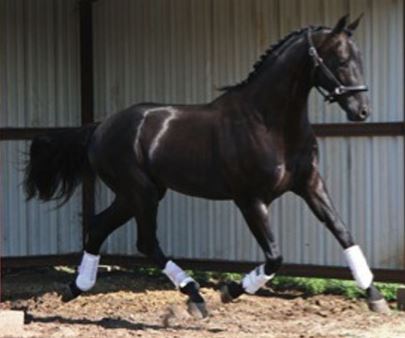
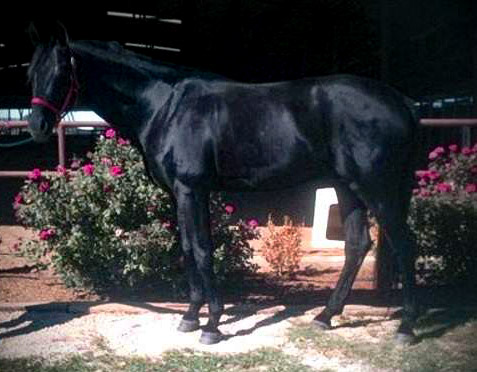
SONNTAGSKIND was the only stallion in the USA approved for breeding with the American Hanoverian Society in 2009 and was the highest scoring stallion accepted into the ISR/OLD NA breeding book with an incredible 229 points. I’ll best honest- I couldn’t find much more information on him. I do not think he is still standing at stud. I read somewhere that he was standing at Hilltop Farm, and maybe he was at some point, but he doesn’t appear to be there any longer. He also hasn’t competed since 2011 according to USEF.
- 2009 Champion North American 30 Day Stallion Test
- 2009 North American 70 Day Stallion Test Res Champion
- 2009 USDF Reserve Champion 4/5 Year old Stallion
Materiale - 2009 Region 9 Champion Stallion In Hand
Sire line:
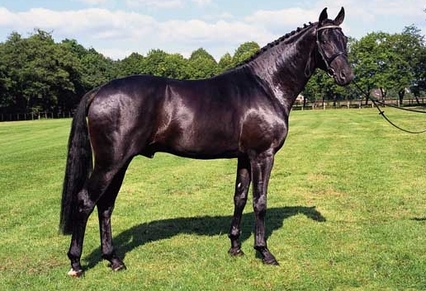
SANDRO HIT is one of the most prolific sires in dressage breeding. He’s one of the top ranked sires for number of licensed sons, particularly among dressage sires. On paper, Sandro Hit could have been a jumper. His sire, Sandro Song, competed both in dressage and showjumping. Sandro Hit’s dam’s (Loretta) sire is by Ramino, who was an international show jumper. That said, Sandro Hit presented poorly in the jumping section of his performance test (There’s a quote out there from D.r Ulf Möller, who said “He makes a nice jump but he has no scope”).
As far as public reception goes, the S line is divisive among breeders and riders. There are some truly lovely ones, but the S line often has a hard time using their hind end properly (sitting and collecting can be a weakness, especially if not ridden properly over the back). A number of people I’ve seen talking about them will share stories of talented S horses that couldn’t hold up to upper level dressage work (weakness in the hind end) or simply didn’t have the work ethic (even if they could overcome their hind end mechanics, they found the work too hard and challenging and mentally said “no”) and ended up in hunter homes where they faced less pressure to use their hind end in ways that challenged them, and have been successful there. Makes sense – on paper, he’s bred to the nines for jumping. Between Sandro Song and his dam Loretta – Ramino is well known for his jumping career, but he’s also got a reputation as being a sire for broodmares (often of jumpers, but he’s a name that I’ll see not infrequently in dressage horses as well). People will often breed to Sandro Hit (or SH descendants) for an improved canter – he seems especially popular among breeders who prefer a more modern type – long of leg, slightly more narrow body, etc. Sandro Hit’s great grand sire (through the top of his sire line) was Sacramento Song, a full TB – who was used as something of a refining influence among breeders.
A lot of this makes sense in relation to Rio. He is definitely a much more modern type warmblood, and people occasionally ask me if he is Thoroughbred or part Thoroughbred. He is very leggy with a narrower body and a more refined head. I have also said time and time again on this blog that Rio has a hard time using his hind end properly. I would say it is his biggest weakness. Personally, I could not envision him handling the rigorous collection required for upper level dressage. On the other hand, he can easily jump around 3 ft, and 3’6 will be no problem for him some day. Would he make an upper level show jumper? I highly doubt it, because again I don’t think he would be able to rock back and use his hind end adequately for large and technical courses.

DONNERHALL was a successful international Grand Prix competitor: two gold medals in the team event at the WEG (94 & 98) and individual bronze in 94, all under rider Karin Rehbein. He had a full competitive career, retiring at age 17 after the 1998 WEG. He’s got a number of licensed sons (over 70), although is outperformed in numbers by his female offspring (over 400). He has a number of top performing sons (Don Schufro, De Niro, Davignon I, Damon Hill) that are all successful Grand Prix competitors.
Breeders tend to go to the D line (Donnerhall, for a long time, but now more frequently, possibly due to accessibility, De Niro) for a stronger hind end that can improve collection and hold up to passage and piaffe. They’re not necessarily the most fashionable of horses (less refined than might be current preference) but have a reputation for being good minded and high trainability.
Donnerhall actually had several full brothers (none anywhere near as successful as he) and his sire (Donnerwetter) was likewise somewhat pedestrian: Donnerwetter actually ended up being sold into the US and was only used on a small group of mares from that point thereafter. From the sire & full siblings’ records, oftentimes you’ll see people say that the D horses are often best when bred to a mare with “a bit of blood” (something that’s less heavy, more modern – more anglo or TB influence) to produce an exceptional sport horse. (Famous son De Niro is a good example of this – his dam had significant thoroughbred breeding. Her sire’s dam was 1/2 TB, and her dam was 1/2 TB as well.)
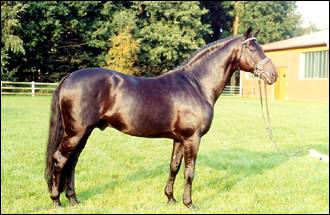
RUBINSTEIN (and the R line) generally needs no introduction. His dam was half thoroughbred (and her full brother was none other than Ahlerich, competed by Reiner Klimke). Another notable R horse, Rembrandt, was by Romadour II (Rubinstein’s sire’s sire) out of a mare who was full sister to Rubinstein’s dam. (There’s a famous picture of Ahlerich, his full brother Amon, and then Rembrandt, meeting at the 98 olympics. The resemblance is uncanny.) As a 2 year old, Westphalian rejected Rubinstein – Gudula Vorwerk took him to Oldenburg at that point, and he finished third in his performance test. Of note: he finished higher in the jumping section than he did in the dressage. He competed through Grand Prix, though didn’t have a super remarkable GP career (he had some rider switches that never seemed to really click).
The adage “R is for rideability” reflects why breeders go to the R line (currently perhaps the most successful R stallion is Romanov, a Rubinstein grandson through son, Rohdiamant – also a successful sire). They aren’t known for having extreme amplitude in their gaits, but have a very correct way of going and pleasant demeanor. Rubinstein himself was notorious for needing to be energized during a ride (and that he needed to be balanced well on his hind end to get any kind of extended trot).
If I had to summarize R, they produce a very nice riding horse with correct movement – standings indicate that you’ll find a number of them competing (even through upper levels) though rarely will they be a “top” Grand Prix horse/world #1 type. (An example I’ll make: You can look at Donnerhall & his full siblings and how only he was really noteworthy – by comparison, Rubinstein had two sons, both full brothers, Rohdiamant and Royal Diamond, who were successful. As far as a numbers game, R seems to statistically produce a successful horse more often. S and D far and away, are more popular/have higher numbers, but statistically, the odds aren’t as good.)
I will say that the “R is for rideability” adage applies 100% to Rio. He is about as easy going and amateur friendly as they come!
Dam line:
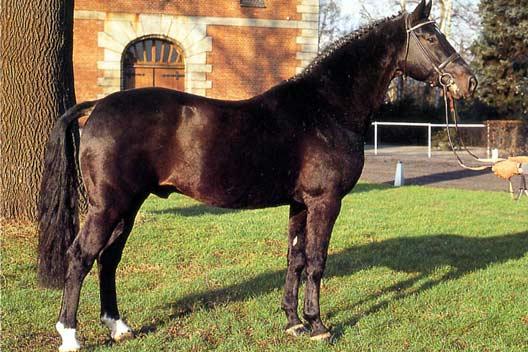
ACAPULCO: His sire, Akzent II, was well known for type and ridability. Acapulco is one of his 11 licensed sons. A in general (Akzent II, through sire Absatz) is well known for versatility in sport: Argentan (an Absatz son) sired Argentinus who was a successful jumper himself, but was also sire of the record high price seller at Vechta, August der Starke (a dressage type, who sired Augustin OLD, who competed in the 2012 olympics). Likewise on his dam’s side, he’s got an influx of some relatively old W – lines. Wendekreis, sire of his damsire, has an interesting diversity of offspring – Wendekreis son Werther is known for his ability to produce a jumping or dressage horse (dam dependent).
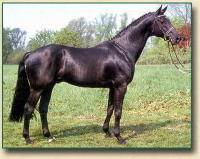
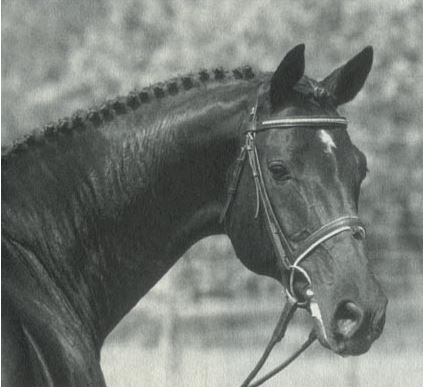
MATCHO X was an Anglo Arabian stallion purchased by Celle in the 80s, for the purpose of refining the breed. Influential in that regard, he helped modernize what was then, a heavier type of horse. He was first out of 39 stallions in his licensing test in 1982, scoring above average for gaits and rideability. That said, he was a smaller horse and many of his offspring were likewise, smaller. He has a number of approved sons, but the number of SPS mares among his offspring is staggering. Dr. Burchard Bade once said the following in an interview: “Matcho was high quality, very good shoulders, good saddle position, good frame, good conformation, and very good character and temperament also a very good walk and good riding ability. You find Matcho on the mother side of some very good horses.”

PIK KOENIG was sired by the thoroughbred stallion, Pik As xx. His damsire was a son of Trakhener, Abglanz (who was also Absatz’s sire, relating to Acapulco, above). Pik As xx stood at Celle in the 50s & 60s, and was a smaller horse (just under 15’2) and most of his offspring were show jumpers. Pik Koenig had the same reputation: he sired a number of successful show jumpers. However, arguably his most famous son, Pik Bube, cemented his legacy in dressage breeding. Pik Bube mares were bred to Donnerhall (above) with remarkable success: Dream of Glory, Don Primero, Donnerschlang, and Davignon were all out of different Pik Bube mares. The P line at large is relatively underused today – Pikko del Cerro (offered by Hilltop for breeding) was shown by Lisa Wilcox for a and Peron is another stallion option for breeding.
_______________________________
Again, a giant thank you to Edre for all her help with his post. I am tickled to know more about where Rio came from. Does anyone else’s horses share any of the same parentage?
